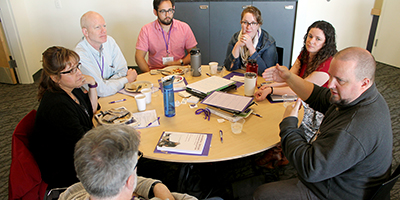Discussion Summary

What barriers do you face on your campus related to ensuring that online learning is accessible and usable for people with disabilities? What are some possible solutions?
Participants identified various barriers and solutions to those barriers, shared below:
Barrier: Faculty feel overwhelmed with accessibility requirements.
Solution: Implement a plan for new faculty to receive training and then slowly bring in instructors of existing curriculum. Allot more time for professional development for faculty to learn about accessibility.
Barrier: There is resistance to change due to time restraints, lack of knowledge and training opportunities, and siloed departments.
Solution: Gather advocates to promote accessibility. Integrate accessibility within regular work flows so that it is a part of everyone’s job instead of just one person’s job.
Barrier: There is a lack of training in accessibility in technology and knowledge of laws.
Solution: Consider offering compensation and other incentives to faculty to encourage them to teach accessibly, including credits or certifications.
Barrier: How can we get faculty interested and excited about accessibility?
Solution: Bring in a panel of students with disabilities to share their difficulties in accessing courses and suggest improvements that would increase that access.
Barrier: How do we find and remediate inaccessible course content, including making sure all videos have captions?
Solution: Provide resources (money and time) and assign responsibilities for making sure all content is made accessible. Review courses and hold faculty accountable for making their materials accessible.
Barrier: Faculty worry accommodations (e.g., extra time on time-limited quizzes) will allow students to cheat.
Solution: Use technology that prevents cheating or create more open-ended tests and assignments where cheating is more difficult.
Barrier: Faculty consider a conflict between “academic freedom” and “civil rights.”
Solution: Explain that helping students achieve success levels the playing field without lowering standards and interfering with academic freedom.